Albizia lebbeck, also known as Indian Siris, is a deciduous tree species native to tropical southern Asia. With its attractive canopy of fern-like leaves and fragrant pink flowers, the Indian Siris makes a beautiful ornamental tree in landscapes and gardens. Here is a complete guide to growing and caring for Albizia lebbeck.
Albizia Lebbeck – Key Facts
| Name | Albizia Lebbeck |
| Common Names | Siris, Indian Siris, East Indian Walnut, Broome Raintree, Lebbeck, Frywood, Koko and Woman’s Tongue Tree |
| Origin | Indian subcontinent and Myanmar |
| Type | Decidious Tree |
| Indoor/Outdoor | Outdoor |
| Soil | Well – Drained |
| Watering | Medium |
| Temperature | 25°C to 35°C |
| Sunlight | Moderate to full sunlight |
| Flowers | White flowers |
| Blooming Season | September to October |
| Height | 60 to 100 Feet |
Overview of Albizia Lebbeck
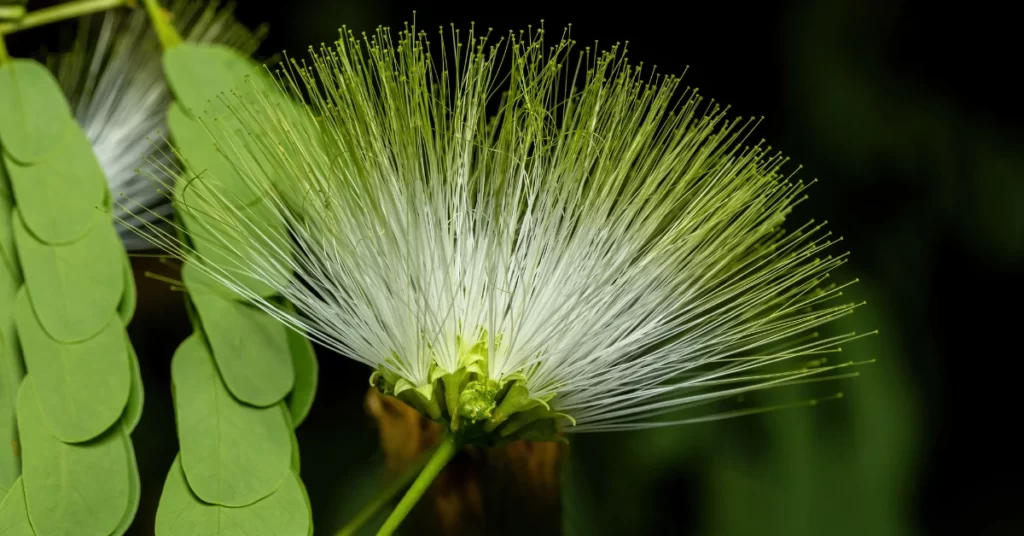
Albizia lebbeck is a fast-growing tree that can reach heights of 30-60 feet at maturity. Also known as Shirish, woman’s tongue tree, or pink siris, this species is valued both for its ornamental qualities and for its medicinal properties in Ayurvedic medicine. The flowers of Albizia lebbeck bloom in dense clusters during summer months, ranging in color from pale pink to bright pink. The leaves are bipinnately compound and the fruit is a flat oblong pod.
Albizia lebbeck thrives in tropical and subtropical climates. With the right growing conditions and proper care, it can also grow in USDA hardiness zones 10-11.
Common names for the Albizia Lebbeck in different Indian languages include:
Hindi: शिरीष (Shirish), भांगुली (Bhanguli)
Bengali: শিরিষ (Shirish), ভাংগলি (Bhanguli)
Telugu: సిరిస (Siris)
Marathi: शिरीष (Shirish), शिरस (Shiras)
Tamil: சிரிஸ் (Siris)
Kannada: ಸಿರಿಸು (Sirisu)
Urdu: شیریش (Shirish)
Growing Conditions for Indian Siris
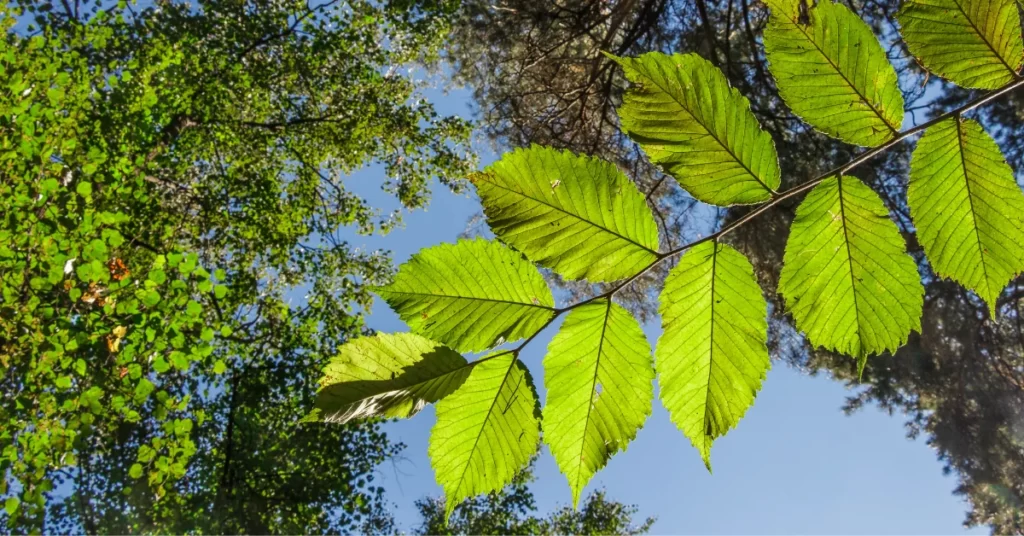
Albizia lebbeck does best in full sunlight and warm conditions. It requires the following:
Here are the key growing conditions for Albizia lebbeck (Indian Siris):
Climate:
- Thrives in tropical and subtropical regions
- Tolerates hot, humid summers
- Cannot withstand frost or freezing temps
- Best suited for USDA zones 10-11
Soil:
- Prefers fertile, well-draining soil
- Medium texture – loam, sandy loam
- Soil pH between 6.0-7.5
- Avoid heavy, compacted or soggy soil
Sun:
- Full sun is ideal
- Needs at least 6 hours of direct sun
- Can tolerate partial shade
- Avoid deep shade
Temperature:
- Prefers warm temperatures between 65°F-90°F
- Needs hot summers above 70°F
- Cannot survive below 30°F
Water:
- Requires frequent irrigation when young
- Drought tolerant when mature
- Soil should dry out between waterings
Providing the ideal climate with warm temps, full sun, fertile soil, and proper moisture allows Albizia Lebbeck to thrive. Site selection is key.
What is the English name for Albizia?
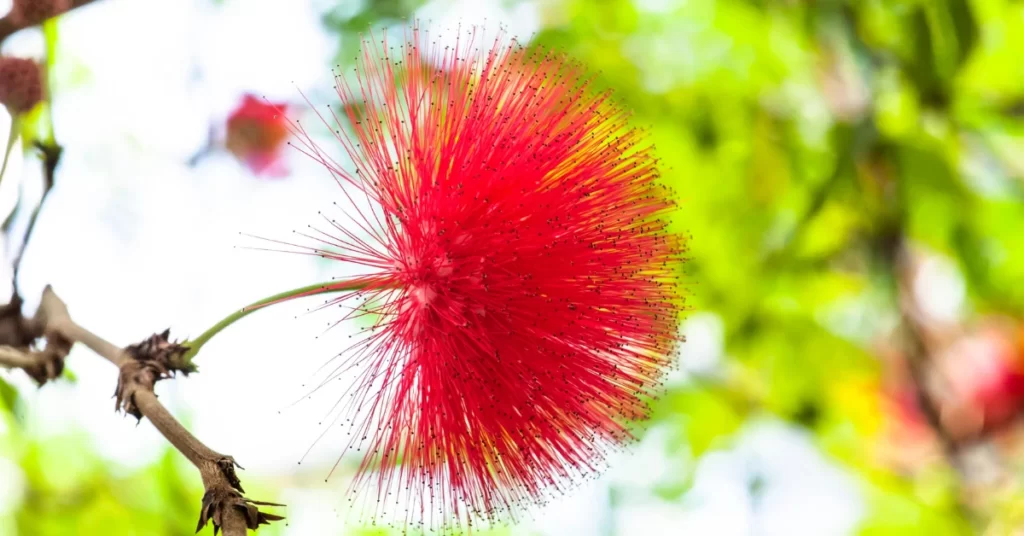
Albizia lebbeck has several common English names, including:
- Woman’s Tongue Tree
- Shirish Tree
- silk plants
- silk trees
- Lebbek Tree
- Siris Tree
- Pink Siris
- Rain Tree
- East Indian Walnut
- Koko Tree
Some less common names are:
- Bastard Tamarind
- Indian Gum Arabic Tree
- Frywood
- Kalkora Tree
But the most widely used common names are Woman’s Tongue Tree, Lebbek Tree, and Shirish Tree.
The genus Albizia contains over 150 different species. But Albizia lebbeck is the most commonly referred to species when using the common name Albizia.
Woman’s Tongue, Lebbek, and Shirish can be considered the main English common names for the species Albizia lebbeck when using the single name Albizia.
Propagating Indian Siris Trees
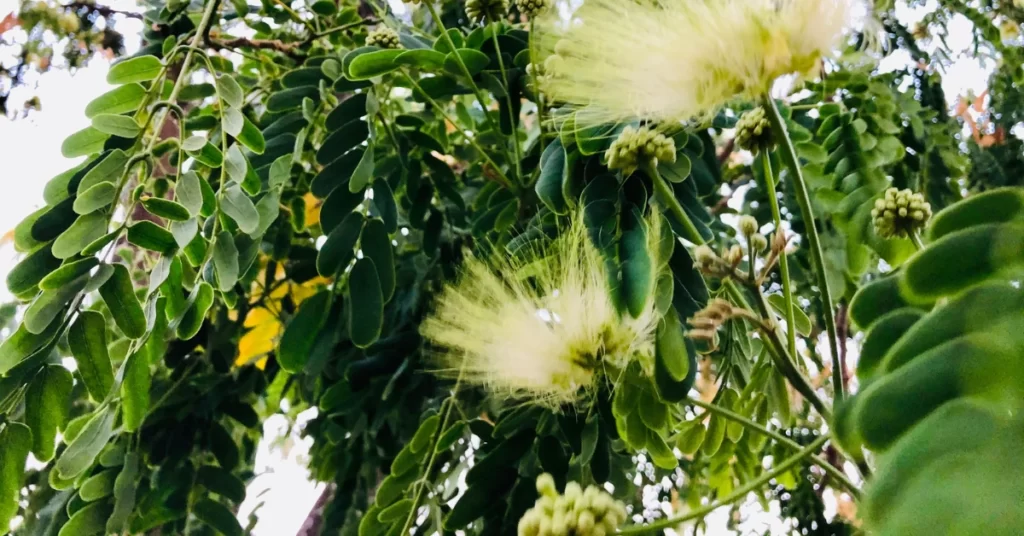
Indian Siris/Albizia lebbeck can be propagated by seed or through vegetative methods:
Seeds:
- Collect seeds when pods turn brown and split open in late summer/fall.
- Remove pulp and soak in water for 24 hours before planting.
- Sow seeds 1 inch deep in pots or nursery beds. Cover lightly with soil.
- Keep soil consistently moist but not saturated.
- Germination usually occurs within 2-3 weeks.
- Transplant seedlings when large enough to handle into larger containers.
Cuttings:
- Take 6-8 inch semi-hardwood cuttings in spring from healthy stems.
- Trim just below a node and remove lower leaves.
- Dip cut end in rooting hormone to encourage roots.
- Plant in potting mix like perlite/peat moss. Keep humid.
- Roots should emerge in 4-8 weeks. Transfer to pots/garden after.
Air Layering:
- Wound a branch by removing 1-2 inch ring of bark in spring.
- Wrap with sphagnum moss and cover with plastic wrap. Secure ends.
- Keep moist until roots form in the moss after 4-8 weeks.
- Cut from parent plant and plant the rooted layer.
Seeds are the easiest method. Cuttings or air layers also produce exact clones of the parent plant. Follow proper procedures for high success rates.
Albizia lebbeck seeds are the easiest method for home gardeners. Plant seeds or propagated plants outdoors after the last frost.
What is Albizia lebbeck leaf used for?
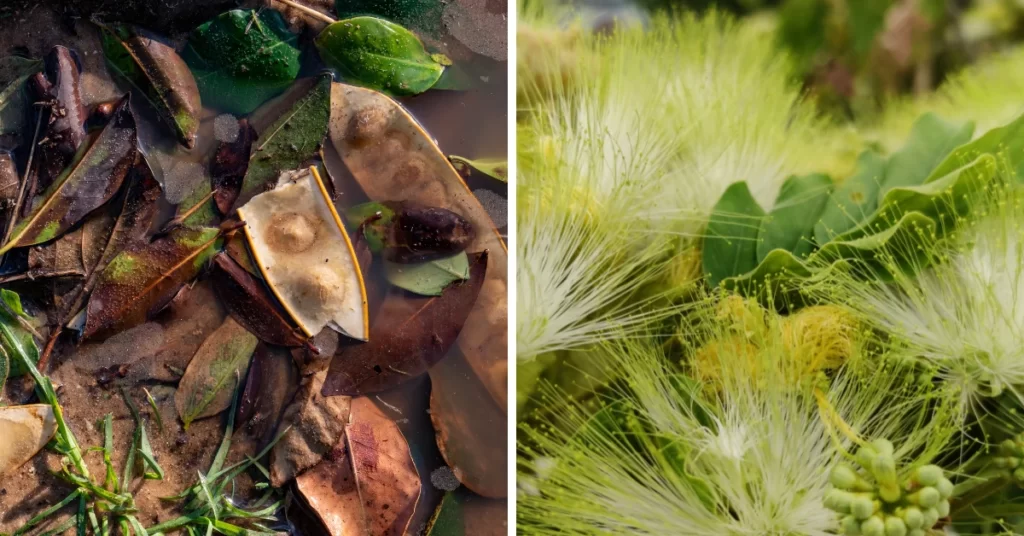
The leaves of Albizia lebbeck have several traditional uses:
- Medicine – In Ayurveda and folk medicine, the leaves are used to treat inflammation, pain, bronchitis, asthma, allergies, and gastrointestinal issues. Leaf extracts have demonstrated anti-inflammatory, analgesic, and antioxidant properties.
- Feed – The leaves can be used as fodder for livestock like cattle, goats, and sheep. They are palatable and nutritious. The leaves are chopped or milled and mixed with other feed.
- Fertilizer – The leaves are rich in nitrogen and minerals. They can be composted or worked directly into soil as green manure to enrich the soil. This provides nutrients for other plants.
- Pest control – Extracts made from the leaves have insecticidal and larvicidal properties. They can be used to make organic pesticides to protect crops.
- Dye – The leaves produce a brown or olive green dye when boiled in water. This natural dye is used to color fabrics, wood, leather, etc.
The key uses of Albizia lebbeck leaves are for medicine, animal feed, fertilizer, pest control, and dye production, especially in rural tropical regions where the tree grows abundantly. The leaves form an important resource with their various phytochemical properties.
Caring for Indian Siris Trees
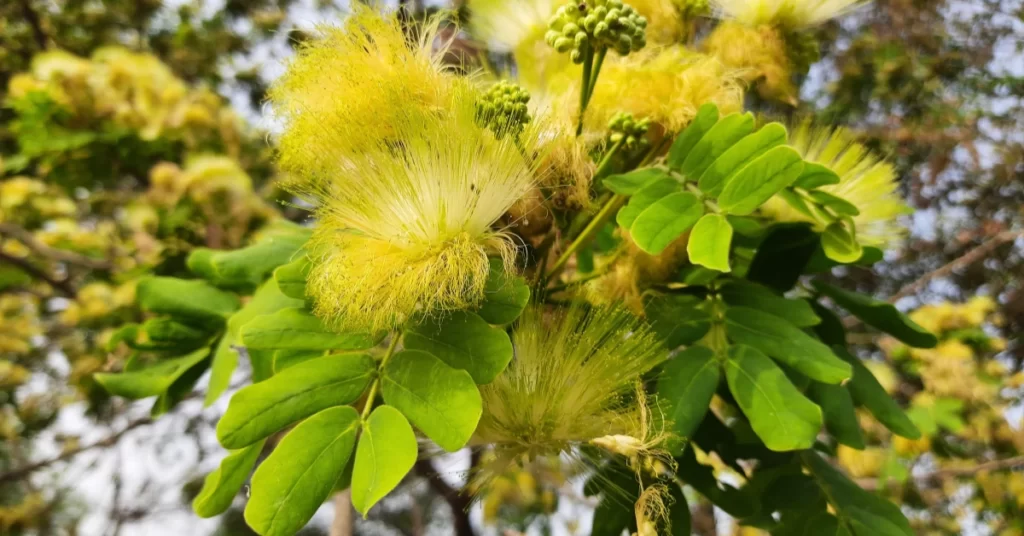
With the right care, Albizia lebbeck will grow into a beautiful ornamental specimen. Follow these tips:
Watering
- Young trees should be watered regularly 1-2 times per week, providing about 1 inch of water each time. This encourages deep root establishment.
- Mature Albizia trees are drought tolerant but need infrequent deep watering during dry periods. Water slowly and deeply every 2-3 weeks during drought.
- The soil should be allowed to partially dry out between waterings. Avoid keeping the soil constantly soggy.
- Water at the base of the tree near the trunk and outwards to the edge of the canopy. Avoid sprinklers that wet foliage.
- Sandy soils will require more frequent watering than clay soils. Monitor soil moisture before watering.
- Provide more frequent watering if growing in hot climates or container planting.
- Reduce watering in rainy seasons and winter dormancy.
- Yellowing leaves, drooping branches and lackluster growth indicate under-watering.
Providing ample water during establishment while avoiding constant moisture will allow Albizia lebbeck to develop a robust root system and thrive in the landscape.
Fertilizing
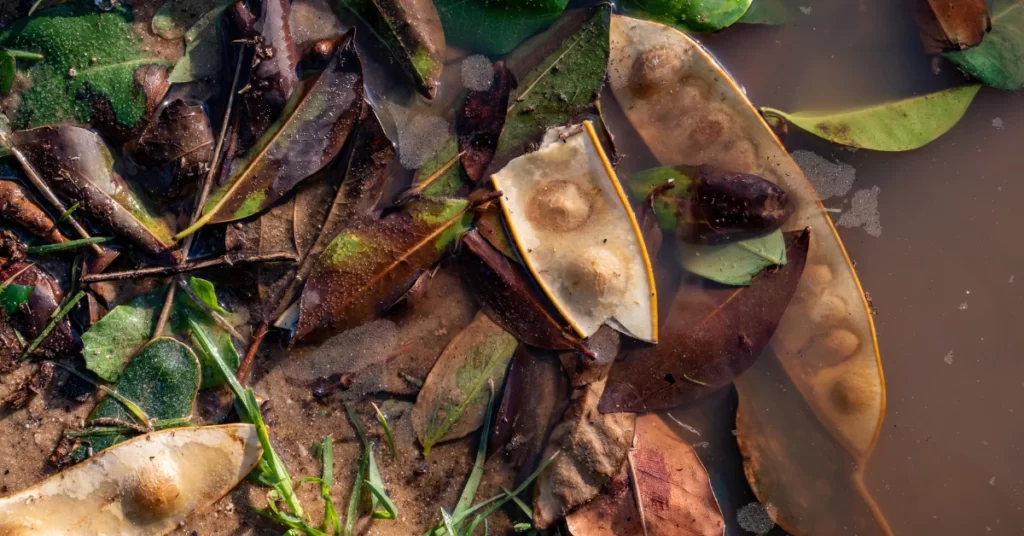
Here are some tips for fertilizing Albizia lebbeck trees:
- Fertilize in early spring as new growth emerges using a balanced fertilizer such as a 10-10-10 or organic compost. This will stimulate healthy growth.
- Avoid high nitrogen fertilizers which can promote excessive foliage growth at the expense of flowers and fruits.
- For mature trees, apply fertilizer near the canopy edge where feeder roots are located rather than near trunk. Spread evenly.
- Follow label instructions for application rates – usually 1-2 lbs per inch of trunk diameter, applied in area below the branch spread.
- Alternatively, top-dress annually around base with 2-3 inches of compost to slowly release nutrients.
- Supplement with a potassium-rich fertilizer if flowering or fruiting is diminished to boost buds.
- Fertilize every 2-3 years for mature trees, or annually for younger Albizia trees.
- Excess fertilizer can damage roots – avoid over-application.
- Timed-release or slow-release fertilizers can provide a continuous supply of nutrients over the season.
Proper fertilization encourages vigorous growth and lush flowering for Albizia lebbeck specimens. Feed young trees annually and mature trees every few years.
Pruning
Here are some tips for pruning Albizia lebbeck trees:
- Light pruning can be done in early spring before new growth emerges. This avoids excessive sap flow.
- Remove any dead, damaged or crossing/rubbing branches back to the trunk or a lateral branch.
- Prune to shape the canopy if needed, but avoid topping or heavy pruning which can reduce flowering.
- Pinch or prune shoot tips during the growing season to encourage bushier growth.
- Thin inner branches for better air circulation and light penetration into the canopy.
- Limit pruning to 1/4 or less of the overall canopy per season.
- Sterilize pruning tools between cuts to avoid spreading disease.
- Pruning paint can be applied to cuts over 1 inch diameter.
- Remove suckers that sprout from the rootstock unless propagating.
- Consult an arborist for major limb removals or structural pruning concerns.
- Avoid pruning immediately before or during flowering period.
Regular light pruning encourages shape, foliage density, and flowering for Albizia lebbeck while maintaining the natural form of the tree.
Pest/Diseases

- Aphids – These small sap-sucking insects can swarm young leaves and shoots, causing curling, yellowing, and stunting. Control with horticultural oil or insecticidal soap sprays.
- Scales – Armored scale insects attach to stems and leaves, removing plant juices. Look for small bumps on bark. Prune out heavily infested stems and spray with neem oil.
- Leaf miners – Larvae burrow between leaf surfaces, creating meandering trails or blotches. Pick and discard affected leaves. Apply systemic insecticide as preventive.
- Caterpillars – Larval stage of butterflies/moths chew on leaves. Hand pick or use Bacillus thuringiensis (Bt) treatments.
- Powdery mildew – White fungal coating on leaves. Improve air circulation and avoid overhead watering. Use sulfur fungicide sprays as needed. for more click here
- Root rot – Caused by overwatering. Allow soil to dry between waterings. Improve drainage if needed.
- Rabbits/deer – Young trees may be damaged by browsing wildlife. Protect with fencing until established.
Monitor plants routinely for early signs of infestation. Practice preventive care and use integrated pest management for best results.
With proper site selection, frequent watering when young, occasional fertilizing, and pruning for shape, the Albizia lebbeck tree will reward you with fast, easy growth and bountiful pink blooms.
Uses for Indian Siris

The Indian Siris is prized as an ornamental shade tree, but also has various additional uses:
Ornamental Use
- With its fern-like leaves and abundant pink flowers, Albizia lebbeck makes a beautiful focal point or patio tree in tropical landscapes. Its fast growth and showy blooms make it a popular ornamental tree.
Medicinal Use
- In Ayurvedic medicine, various parts of the tree including the bark, leaves, flowers and seeds are used to treat illnesses like bronchitis, burns, epilepsy and eye infections. It has antimicrobial and anti-inflammatory properties.
Wood Use
- The wood of Albizia lebbeck is strong, durable and resistant to weathering. It is used for making furniture, boats, musical instruments, carved items and turnery. The wood is also favored for firewood and charcoal.
Other Uses
- The leaves are used as fodder for cattle. The bark can produce a gum and the pods have saponins used for soap-making.
This versatile, fast-growing tree can provide ornamental beauty, herbal remedies, and practical wood products.
Conclusion
Albizia lebbeck is an attractive tropical tree that can enhance any warm climate landscape. By providing ample sunlight, rich soil, proper irrigation, and occasional fertilizing, these Indian Siris trees will thrive. Their lush canopy, fragrant blooms, and medicinal uses make Albizia lebbeck a valuable addition to any garden. With the right care, you can enjoy the beauty and benefits of this ornamental tree.
Frequently Asked Questions
What are some common names for Albizia Lebbeck?

Some other common names for this species include Indian Siris, Shirish, Woman’s Tongue Tree, Lebbeck Tree, and Pink Siris.
How fast does Albizia Lebbeck grow?
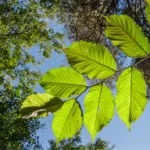
Albizia lebbeck is a fast growing tree, growing up to 3 feet per year when young under ideal conditions. It can reach a height of 30-60 feet at maturity.
When does Albizia Lebbeck flower?
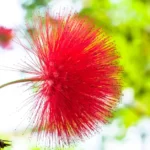
The flowers bloom in mid to late summer, usually June through August. The flowering period can last for several weeks with proper care.
Is Albizia Lebbeck poisonous?
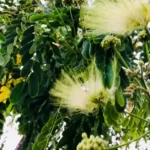
While parts of the tree have been used medicinally, the seeds are considered toxic if ingested. Children and pets should be kept away from the seeds.
Can Albizia Lebbeck survive winter?
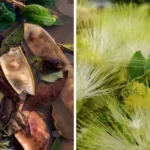
No, Albizia lebbeck is frost tender. It can only survive in zones 10-11 and does not tolerate any freezing temperatures.

1 thought on “How to Grow Albizia Lebbeck | Indian Siris Care”